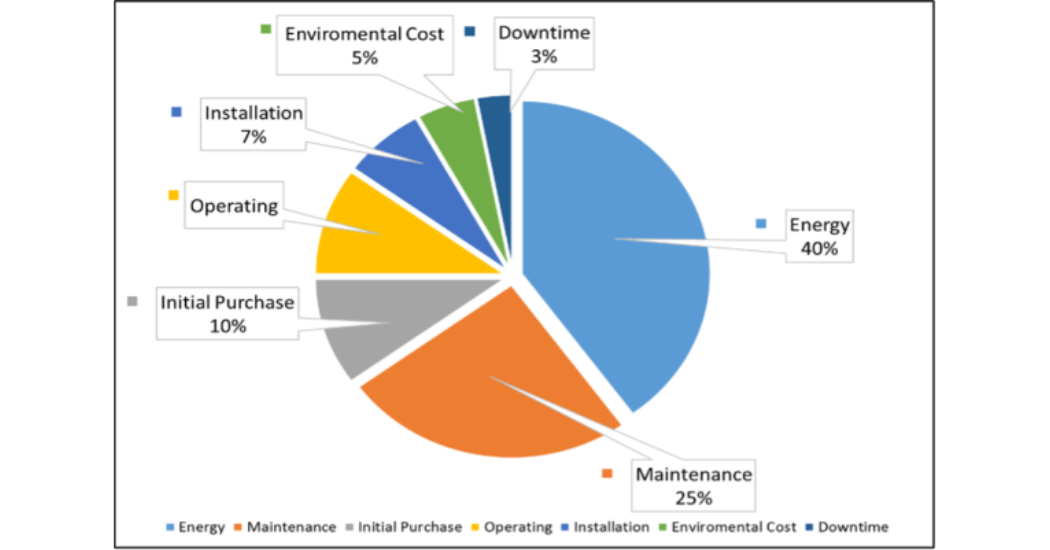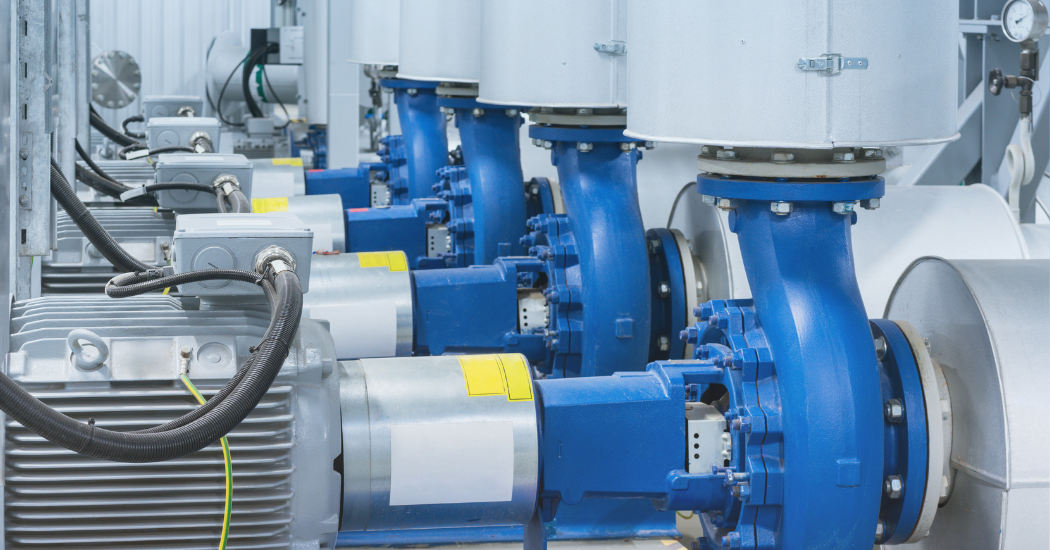By Matthew Derner, Manager, Business Development, Pump System Programs, The Hydraulic Institute
The Hydraulic Institute (HI) defines pump system optimization as follows:
“The process of identifying, understanding and cost-effectively eliminating unnecessary losses while reducing energy consumption and improving reliability in pumping systems, while meeting process requirements, minimizing the cost of ownership over the economic life of the pumping systems.”
Getting there is a process that requires a few steps. For utilities to mine energy efficiencies while optimizing their clean water pump systems, they need to do the following:
See the Bigger Picture
The U.S. Department of Energy’s 2002 Motor Market Assessment established that pumping systems offer the greatest optimization potential of all types of fluid systems, with potential savings up to 75% and an average net savings of 20.1%.
Maintaining the balance and correlation between spend and output is essential: Either a reduction in spend or an increase in output boosts optimization. However, if the pump system can minimize utility costs via reduced consumption of water and energy in a way that does not compromise reliability or output, optimization is achieved.
Power utilities may incentivize system optimization by subsidizing assessment costs and providing rebates that cover a portion of the energy savings upgrade. In fact, HI recently launched digital resources to assist utilities in establishing and maintaining incentive programs to assist in overall energy reduction.
It’s important to understand that all pumps are selected to meet system requirements—never the other way around. Once the application is determined, engineers can assess criteria, which vary greatly between different uses. For example, a condensate pump intended to pump saturated water requires different flow rates and design attributes than a cooling water pump. The energy consumption required for any system depends on the flow rate of the entire system including the pressure (head) and how often the pump(s) are operating.
When it comes to pumps, energy and cost savings for utilities will vary depending on a variety of factors for different settings, but properly selecting pumps and ensuring they have an HI Energy Rating Label will increase the savings.
 By reviewing the entire system and not just the individual pump, engineers and specifiers lay the foundation to select the right pump or system for the application and the proper control methodologies to manage the flow of energy and ensure reliability.
By reviewing the entire system and not just the individual pump, engineers and specifiers lay the foundation to select the right pump or system for the application and the proper control methodologies to manage the flow of energy and ensure reliability.
Build the Best Assessment
To achieve optimization in an existing pump system, it’s important to start with an assessment. Proper assessments provide a host of results to justify costs for improvements to the system’s design, control, operation and maintenance. Improvements to pump systems for optimization can result in reduced system head (pressure), reduced system flow rate or operating time, more efficient equipment or controls and/or improved installation, maintenance or operation procedures.
This assessment should be built in three levels. First, the paper audit begins with pre-screening and gathering system information for pumping systems. This data draws from equipment information, control schemes, operating parameters, reliability issues, and performance curves. With this information, potential for energy savings can be quantified, and recommendations for level two or three assessments can be made.
Level two assessments entail physically measuring the system for a specific amount of time to provide a snapshot of how the system is operating. It is important to note, however, that a level two assessment will not be sufficient for systems with significant variable flow or pressure over time.
Level three assessments include a longer-term system measurement to establish how the system operates over a period of time. This assessment documents how the system varies so that the complete picture can be seen. This type of assessment is accomplished with the use of in situ monitoring combined with any available historical site data.
Make Energy Efficiency Part of the Cost Assessment
A variety of factors for different settings can affect energy savings resulting in long-term potential for significant cost savings. Upfront costs can often deter specifiers from considering overall savings throughout a pump’s lifecycle.
 For a typical pumping system, 65% of the total cost of ownership (TCO) is related to energy and maintenance, while the initial cost accounts for only 10%. For example, a double-casing between bearing multi-stage pump (BB5) will cost more than an axially split multistage pump (BB3), but the BB5 is designed for high reliability in high-pressure and temperature applications. Trying to reduce costs upfront by extending the pressure and temperature range of the BB3 pump could result in a much higher TCO due to maintenance costs. Enhancing the energy efficiency of pumps can also go a long way to save on utilities. To help identify the most efficient pump for the system requirements, the Hydraulic Institute (HI) offers an Energy Rating database for selecting pump types below 200 horsepower.
For a typical pumping system, 65% of the total cost of ownership (TCO) is related to energy and maintenance, while the initial cost accounts for only 10%. For example, a double-casing between bearing multi-stage pump (BB5) will cost more than an axially split multistage pump (BB3), but the BB5 is designed for high reliability in high-pressure and temperature applications. Trying to reduce costs upfront by extending the pressure and temperature range of the BB3 pump could result in a much higher TCO due to maintenance costs. Enhancing the energy efficiency of pumps can also go a long way to save on utilities. To help identify the most efficient pump for the system requirements, the Hydraulic Institute (HI) offers an Energy Rating database for selecting pump types below 200 horsepower.
Build an Assessment Team
It’s important to understand that collaboration is essential when undergoing pump system evaluations and assessments. Because of the complexity of such systems, the assessment team should be comprised of personnel from cross-functional backgrounds including:
- Host organization representative that has management support and overall responsibility and ownership
- Assessment engineer with broad pump system analysis competencies
- Specialists on system processes, operations and functions
- Specialists on the maintenance practices and history
- Specialists who can provide the team with cost data
There are certified professionals who can assist with this, known as a Pump Systems Assessment Professional (PSAP). These experts have completed HI’s PSAP program, a certification program that sets the standard for the discipline of pump systems assessment and the use of pump system optimization techniques. Professionals with the PSAP certification have demonstrated that they have the requisite knowledge and experience to perform high-quality pump system assessments.
Identify Optimization Opportunities
To be accurate in the determination of energy consumption, the next step is to evaluate opportunities for efficiency gains in system flow, pressure/head, and pump, motor or drive efficiency and operating time. In existing systems, the energy requirements can be measured over time as a benchmark to aid in identifying where energy consumption can be optimized.
The time for this process may need to account for seasonal variations, so an entire year may be needed. In contrast, a batch process for a system’s specific task (e.g., provide 100 gallons per minute [gpm] of water around a reactor to maintain 200 degrees Fahrenheit for one hour), will be a much shorter benchmark because the periodic operation is known and consistent.
Remember that Footprint Matters
Space availability and the pump system’s footprint are important factors in the selection process. Given the accessible space, a frame mounted (a pump that has its own bearing frame), close coupled (motor bearings carry pump loads), or inline pump may be appropriate based on the power and speed requirements. However, these options will not have an interchangeable footprint.
Think Smart
Consider using smart pumps that integrate a Variable Frequency Drive (VFD), which have the pump performance programed in from the factory, instead of retrofitting with a separate VFD. Both solutions reduce the pump speed to meet a designed set point for greater efficiency and cost savings. However, the more conventional approach of installing a separate VFD requires the additional legwork of installing the VFD near the pump, installing instrumentation and connecting it and programing the VFD, which can also create opportunities for error. Additionally, having the performance of the pump programed into the VFD allows control based on the VFD speed and power, without other external instrumentation.
Carefully Assess Flow Requirements and Fluid Properties
Fouling, corrosion and erosion of pumps and pipes over time can be attributed to biological, chemical, and abrasive factors, so understanding fluid properties can be critical to avoid failure or the need for continuous and costly maintenance. Additionally, fluid viscosity and temperature are also critical considerations in the pump selection process.
For example, positive displacement pumps are often used in the industrial and petrochemical sectors and in many applications with viscous products. These pumps come in many designs, but generally deliver consistent volume with every rotation of the shaft, efficiently handling viscous liquids and delivering a nearly consistent flow against low or very high pressures. A benefit is that adding a variable speed drive allows these pumps to be dialed into a precise flow rate, or possibly have their flow extended to meet future system demands.
Ultimately, selecting the right pump design for the application is vital for efficient and reliable operation. The process designer must have a thorough understanding of the treatment process, its liquid composition, industry standards, and best practices, and must work collaboratively with trusted pump manufacturers to ensure a successful outcome. It is difficult to cover every detail of pump selection procedures, but focusing on what was included in this article ensures you are aware of the most important aspects of pump selection.
Originally published in Compressed Air Best Practices




